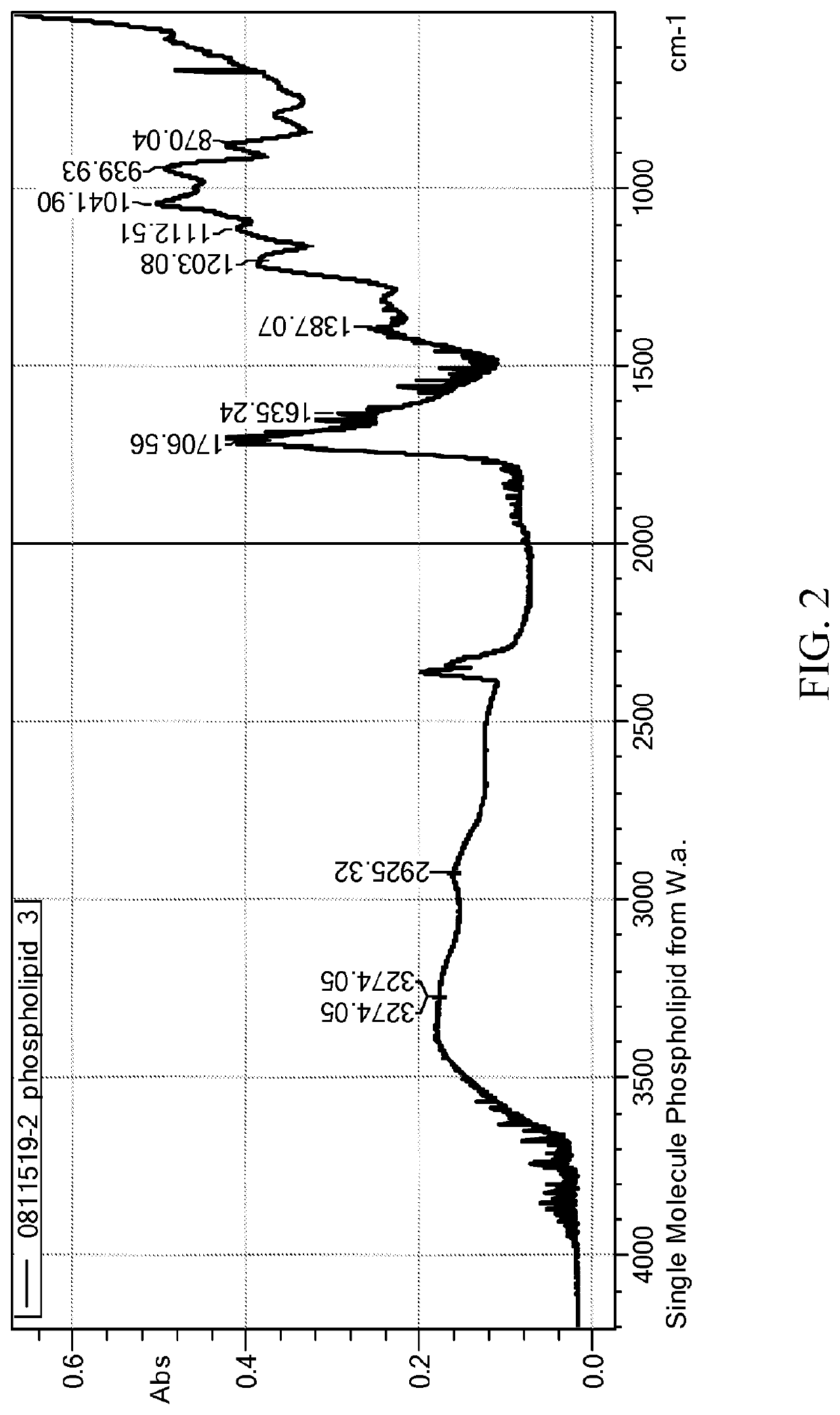Materials and Methods for Producing Cardiolipin-Like Phospholipids
a technology of phospholipids and materials, applied in the field of materials and methods for producing cardiolipinlike phospholipids, can solve the problems of large-scale production of biosurfactants, large-scale commercialization of biosurfactants, and formation of aggregated micellar structures in solution, so as to improve the health and/or appearance of skin, promote healing of damaged or wounded skin, and increase the level of cardiolipin of epithelial cells
- Summary
- Abstract
- Description
- Claims
- Application Information
AI Technical Summary
Benefits of technology
Problems solved by technology
Method used
Image
Examples
example 3
ion of Phospholipids from Yeast Culture
[0226]When the nutrient medium utilized in Examples 1 and 2 supra turns a pink color, this signals the time for harvesting of the culture. The entire yeast culture is harvested and mixed with ethyl acetate at a ratio of 1:1 by volume for at least 40 to 100 hours, preferably about 48 hours to 96 hours.
[0227]After mixing, the culture and ethyl acetate mixture is centrifuged at 8,000×g for 30 minutes to produce a cell pellet, a water phase, a middle solid phase and a top ethyl acetate layer.
The water phase is collected and evaporated at 55 to 65° C. until the resulting product is a viscous, concentrated brown mass. The mass comprises purified phospholipids at a purity of 90% by weight or greater.
Example 4—Analysis of Phospholipids Produced by W. anomalus
[0228]The phospholipid was treated according to Table 1 to test for solubility in different solvents. It is important that the sample was soluble in water, given that only a few phospholipids are ...
PUM
 Login to View More
Login to View More Abstract
Description
Claims
Application Information
 Login to View More
Login to View More - R&D
- Intellectual Property
- Life Sciences
- Materials
- Tech Scout
- Unparalleled Data Quality
- Higher Quality Content
- 60% Fewer Hallucinations
Browse by: Latest US Patents, China's latest patents, Technical Efficacy Thesaurus, Application Domain, Technology Topic, Popular Technical Reports.
© 2025 PatSnap. All rights reserved.Legal|Privacy policy|Modern Slavery Act Transparency Statement|Sitemap|About US| Contact US: help@patsnap.com



